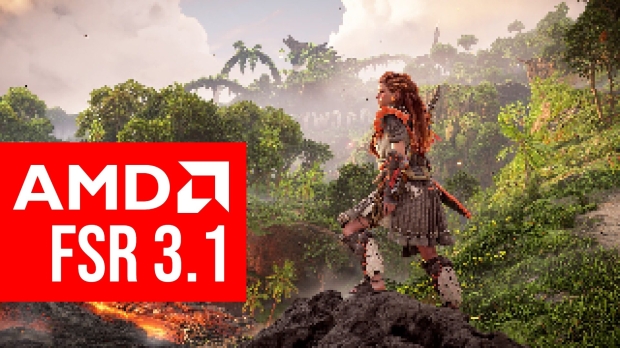Last week, AMD's long-awaited FSR 3.1 update arrived, with support from five games - all first-party PlayStation 5 ports from Sony studio Nixxes. Horizon Forbidden West, Ratchet & Clank: Rift Apart, Ghost of Tsushima, Spider-Man Remastered, and Spider-Man Miles now feature FSR 3.1, which updates the upscaling Super Resolution component and Frame Generation.

Moving objects with AMD FSR 3.1 look pixelated and noisy compared to DLSS and XeSS, image credit: YouTube/Digital Foundry.
It's good news regarding the latter because AMD's Frame Generation is now decoupled from FSR upscaling. It now works natively with NVIDIA DLSS, bringing Frame Generation to a legion of GeForce RTX 30 Series owners. As NVIDIA's AI-powered version is limited to the GeForce RTX 40 Series, AMD FSR 3.1 is the update you love to see, especially when AMDS Frame Generation performance and image quality are up there.
Even though AMD touted significant image quality updates to FSR 3.1, upscaling from less noise and ghosting, that's not the case. Based on initial reviews and tests from Digital Foundry and others, FSR upscaling is still a distant third behind NVIDIA DLSS and Intel XeSS.
The issue seems to be a lack of clarity on moving objects, with things like Aloy's hair in Horizon Forbidden West and the edges of moving background objects in Ratchet & Clank: Rift Apart and Ghost of Tsushima becoming a garbled, noisy, and pixelated mess with FSR 3.1.
Testing at 1440p using the common 'Balanced' preset with FSR 3.1, DLSS 3.7, and XeSS 1.3, there's an apparent degradation in image quality when using FSR. Digital Foundry's initial conclusion is that AMD's FSR lacks anti-aliasing on moving objects, whereas DLSS and XeSS have this feature. YouTube tech creator Vex also confirms that the same visual artifacts exist when using the 'Quality' FSR 3.1 preset at 1440p.
This doesn't mean that FSR 3.1 upscaling isn't worth enabling, as the performance increase will make the hit to image quality a trade-off many gamers will be willing to make. However, it's still a shame that with FSR 3.1, AMD hasn't created a version of its upscaling solution that delivers exceptional results at 1440p.



